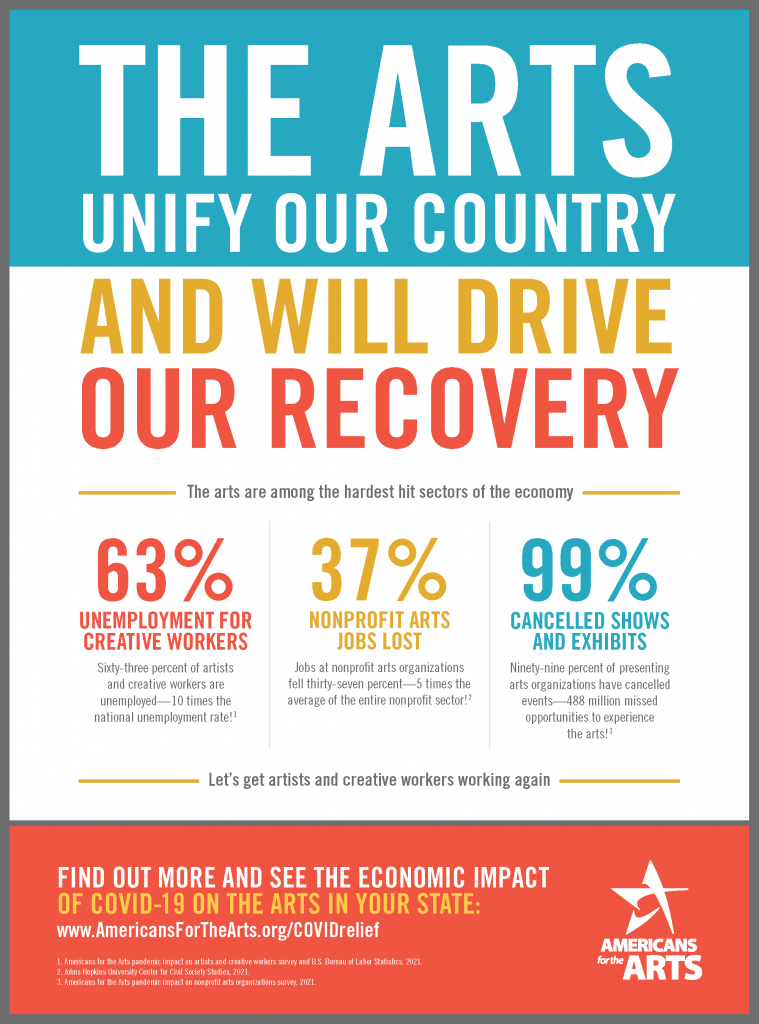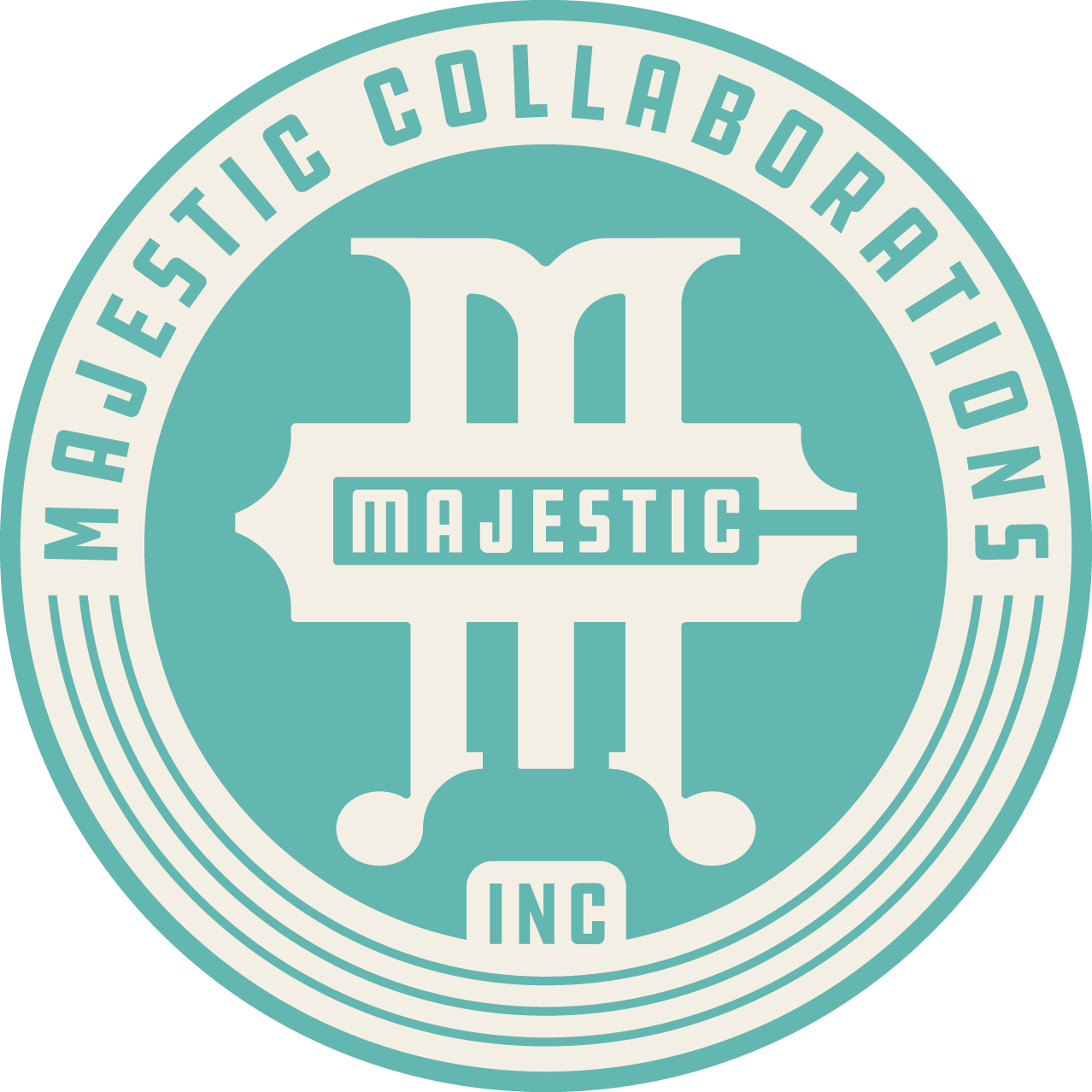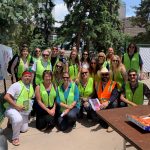Creatives as Leaders in Pandemic Recovery and Resilience
What would a future look like where arts, culture, and event workers were also prepared as active leaders in their community’s resilience and emergency preparedness?
According to the the U.S. Bureau of Labor Statistics, 63% of creatives workers were unemployed as a result of the pandemic. Yet 83% of creative workers say they are ready to put their creative practice to use as a part of national recovery efforts. As we work towards pandemic recovery, we believe creatives can play a key role in these efforts, and are already catalysts for social transformation and community-building. If suitably prepared, creatives are well positioned to act as leaders in creative pandemic recovery efforts and build resilience among communities.
1. They possess skills and resources useful for intersectional work in community emergency response and resilience.
The same skills required to produce safe, accessible, sustainable live events are transferable to contexts requiring any combination of the development of temporary infrastructure, management of large groups of people, and support of mental health and wellness, whether providing safe emergency gathering spaces, temporary housing, pop-up classrooms, or other community services.
2. Emergency response agencies like FEMA recognize arts and cultural workers as natural partners for equitable community-driven emergency response
In its “National Disaster Recovery Framework,” the Federal Emergency Management Agency (FEMA) advocates for a whole community approach to preparedness by equipping existing community leaders to support local disaster recovery efforts by serving as disaster mitigation and response workers and in other identified roles. By rooting response and recovery within existing communities, emergency response coordinators benefit from existing local knowledge and increased trust, inclusion and cross-cultural communications
3. Current practices often position arts and event professionals among the most economically vulnerable to disruption.
An estimated 77% of people in the live events industry lost 100% of their income in 2020 as a result of the pandemic, and as of March 2021, 63% of creative workers remained unemployed, ten times the national average.
Pre-pandemic, arts and cultural production accounted for over $804 billion (4.3 percent) of the U.S. economy, an impact larger than the transportation, tourism, or agriculture sectors. In future emergencies, the impact of redeploying our creative sectors in support of community response and recovery, rather than shuttering their operations, would be enormous.
Current practices often position arts and event professionals among the most economically vulnerable to disruption, pointing to the need for alternative revenue streams for this major workforce that permit them to continue to practice and increase their event production skills and expand their professional network, even in times of closure.
4. Performing arts events and live entertainment shape culture. Events build community and catalyze social transformation, making them important vectors for societal change.
5. They’re ready and willing to contribute. Are you one of them?
Help advocate for the value that our creative industries contribute to our communities, and that creatives can become leaders in a creative pandemic recovery and resilience effort. Click here to fill out our survey and learn more about how we think creatives can change communities.

[image text] the arts unify our country and will drive our recovery, 63% unemployment for creative workers, 37% nonprofit arts jobs lost, 99% cancelled shows and exhibits


